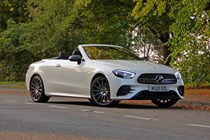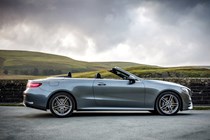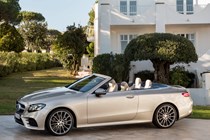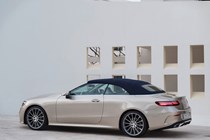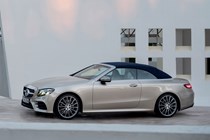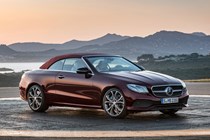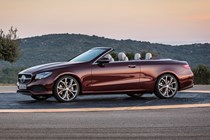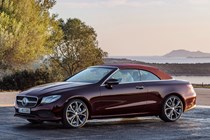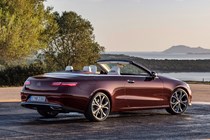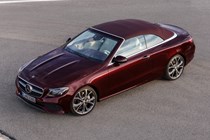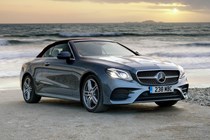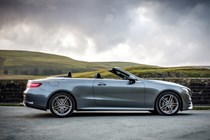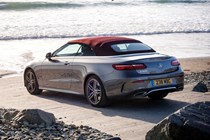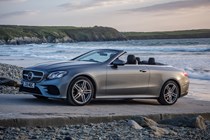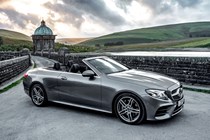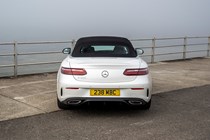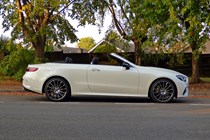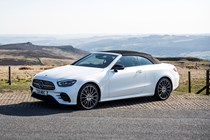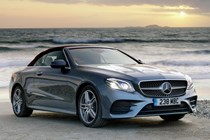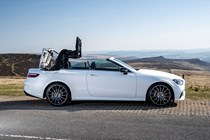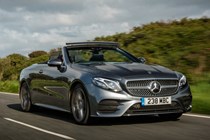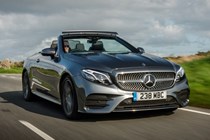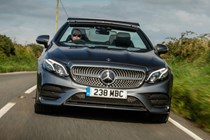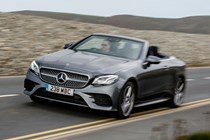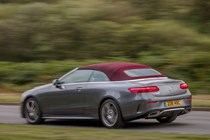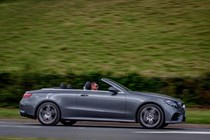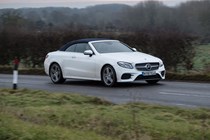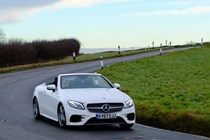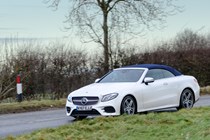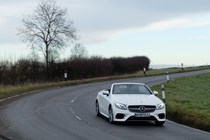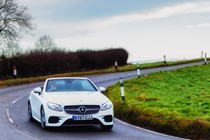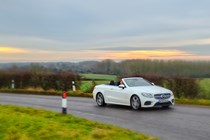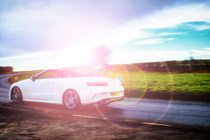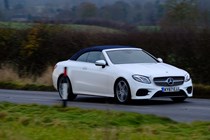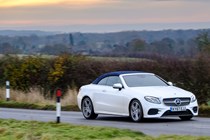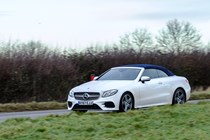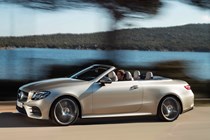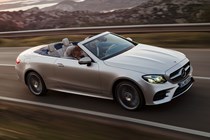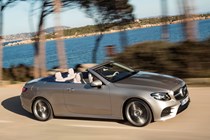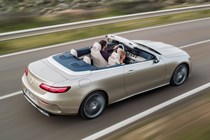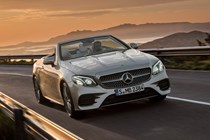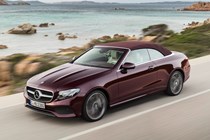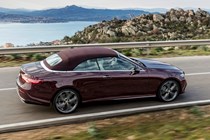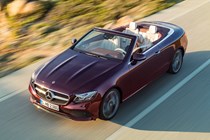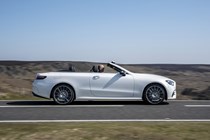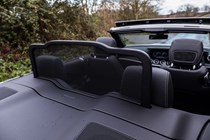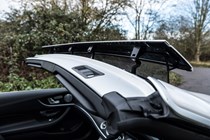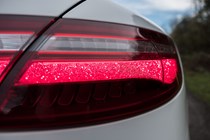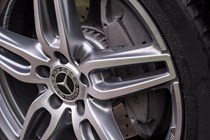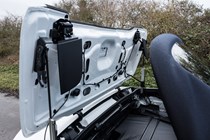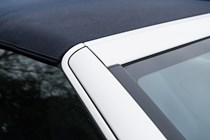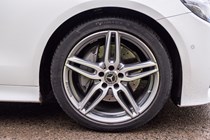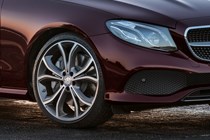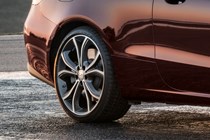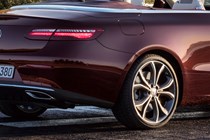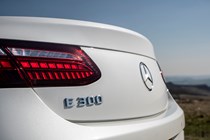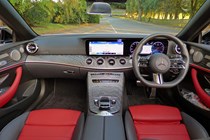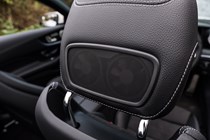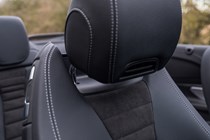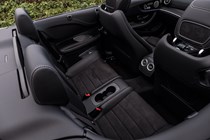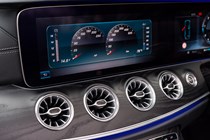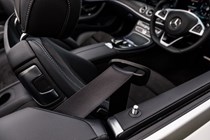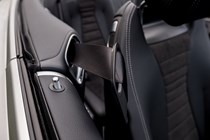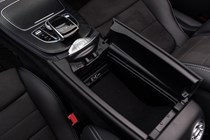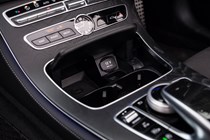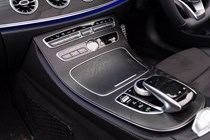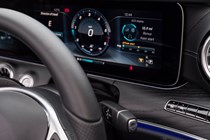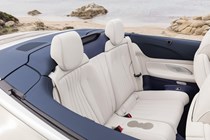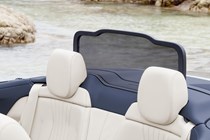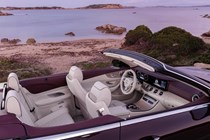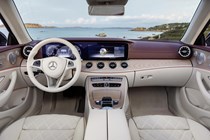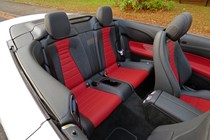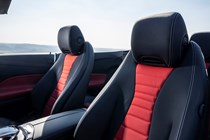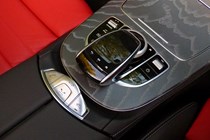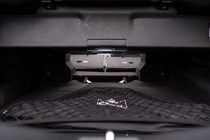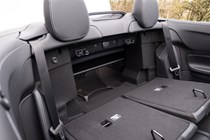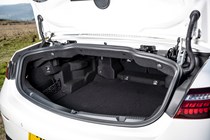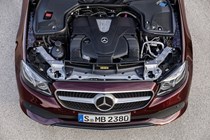
Mercedes-Benz E-Class Cabriolet (2017-2023) engines, drive and performance

- Two diesel, two petrol options
- Rear- or all-wheel drive
- AMG 53 provides most performance
All-wheel drive or basic specification diesels
The least powerful E-Class Cabriolet offered is the E 220 d. It features a 2.0-litre four-cylinder unit producing 194hp and 400Nm torque, and despite a 1,890kg kerb weight can reach 62mph in 7.7 seconds, going on to a top speed of 147mph.
In real terms, this means the engine is turning over in the 2,000rpm area for motorway cruising, with overtaking performance more than adequate for most scenarios. Refinement at idle, from outside the car, is perhaps the weakest aspect of this option but that’s one of the downsides of diesel. Inside, you’re rarely aware of the engine’s presence.
Adding 4Matic all-wheel drive raises the cost of the basic car by £2,400 with no change to the engine itself. The 0-62mph time for the E 220 d 4Matic is 7.9 seconds, and the top speed drops to 145mph.
Seeking more power in your diesel E-Class? Then the E 350 d, available in 4Matic only, is the answer. Underneath the bonnet is a 3.0-litre V6 diesel producing 258hp and 620Nm, giving near-AMG levels of performance with 0-62mph reached in 6.1 seconds and a limited top speed of 155mph.
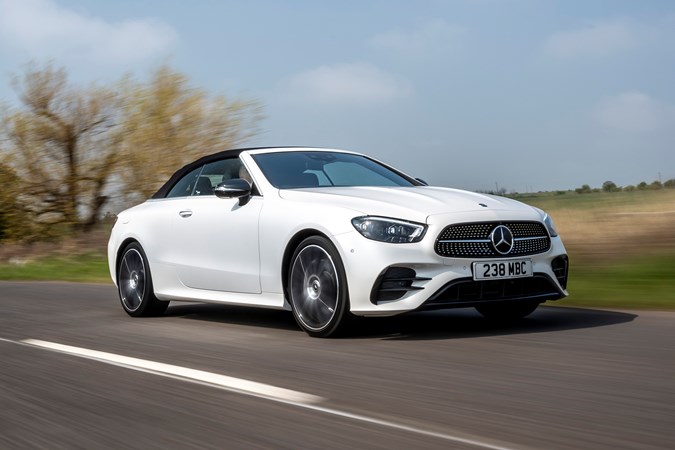
E-Class petrol engines – four cylinders, or six?
Change your fuel preference, and two petrol outputs are available. The E 300 turbocharged 2.0-litre four-cylinder with 245hp is likely to fall short of expectations, despite a 6.6-second dash to 62mph; in the Coupe that engine audibly works hard to deliver those figures.
Removing the roof will only make the effort more apparent, and as the compelling argument for petrol is refinement; once you’ve made the choice to ditch diesel, the E 400 4Matic V6’s 333hp, 5.5-second 62mph sprint and 155mph top speed make it the only petrol model worth considering.
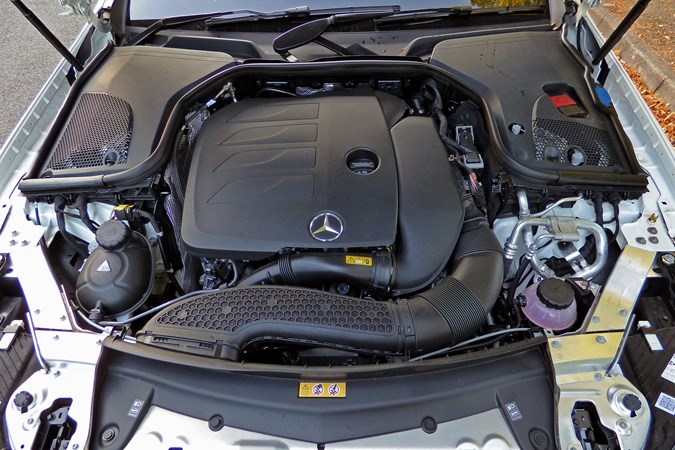
Mercedes-AMG E 53
All of these are offered in only AMG Line trim; Mercedes-AMG offers a mild hybrid version in the form of the E 53 4Matic+. which also marks the return of a straight-six engine to the E-Class.
Rather than seeking to run with zero emissions, it uses the 48V starter-generator as an additional booster, adding 21.5hp and 250Nm torque to the 435hp and 520Nm already produced by the new 3.0-litre twin-turbo engine.
Combined, they allow a 4.5sec 0-62mph. Top speed is limited to 155mph and emissions are an impressive 201g/km CO2, despite the E 53 Cabriolet’s 2055kg weight and performance. In real-world driving, the powerful electric motor should reduce start/stop lag for smooth urban progress.
Handling
- Cabriolet is set up for cruising
- Handles well at speed too
- Pleasant on a wide variety of roads
Each era of Mercedes-Benz E-Class has represented a fairly dramatic reinterpretation of the model, even if the core mid-size large saloon base is consistent. Comfort has been at the centre of all generations, however, and the latest is no exception. Compliant suspension that feels like it has a longer travel than many executive cars makes this a great long-distance tourer, aided by optional driver assistants and low-speed autonomous driving.
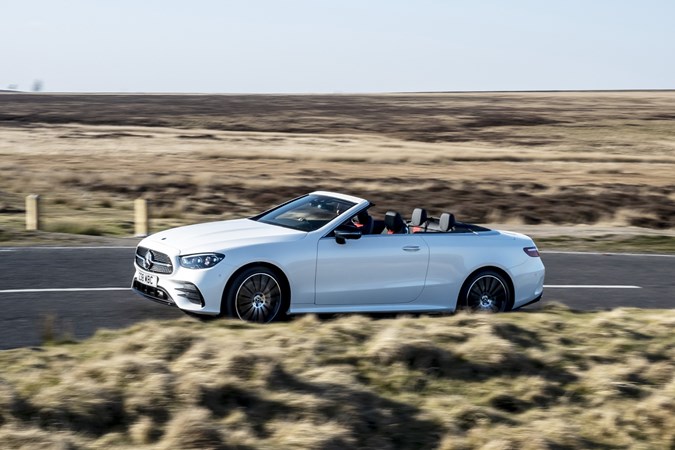
Key to the wide breadth of abilities is the Agility Control chassis on entry level models. Conventional springs and shock absorbers gain adjustable passive damping with selectable modes. It’s well judged for real-world driving, rather than the showroom-impressive change from floating comfort to track-harsh firmness that many manufacturers choose.
Six-cylinder 4Matic models get Air Body Control, a development of classic Mercedes-Benz air suspension.
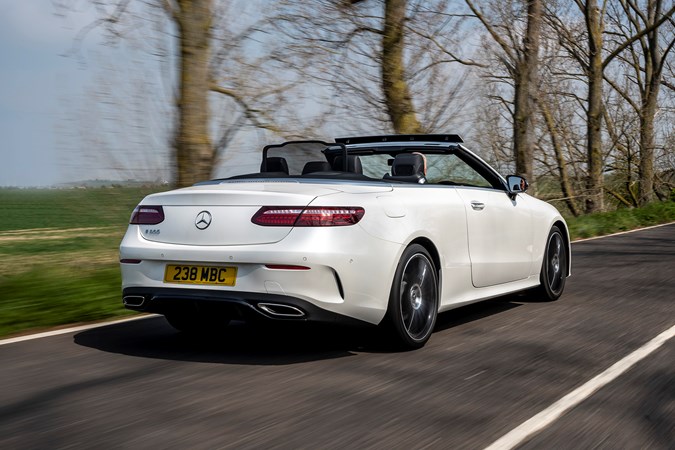
A lot of work has been done under the skin to move away from the detached feel of older models, though, and it shows in the way you can take fairly challenging roads at speed. Steering precision – and feel, unusually – has been improved in part through technology. Weight and perceived response can be tailored to taste from some preset modes, and if you want to feel like you’re in control of a sporting soft-top it obliges – to a point.


